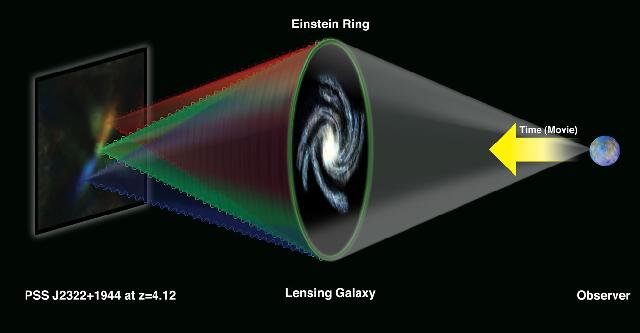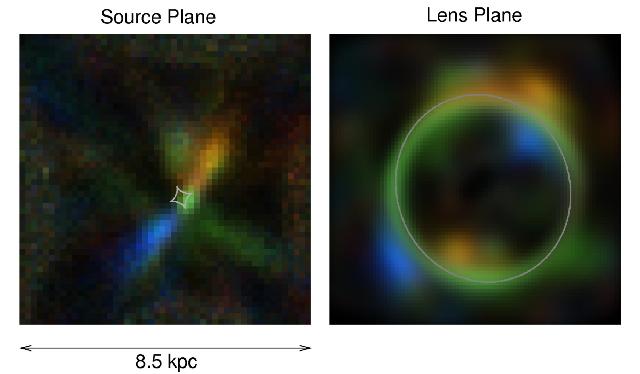October 20, 2008
Graphics: Cosmic Lens Reveals Distant Galactic Violence
Click on Images for Larger Versions

HOW THE DISTANT GALAXY WAS IMAGED:
Radio waves from carbon monoxide gas in the distant galaxy
(left) were
bent by the gravitational effect of another galaxy
directly between the distant object and Earth (right).
The nearly-perfect alignment caused the distant object
to appear as a ring when seen from Earth. This
graphic shows how the distant object would appear as
one moves from Earth toward the lensing galaxy.
Some of the waves are Doppler shifted by the motions of
the gas in the
galaxy, and this is indicated by the colors.
Green indicates
"stationary" gas; red indicates gas moving away from us,
and blue indicates gas moving toward us
with respect to the rest of the galaxy.
CREDIT: Bill Saxton, NRAO/AUI/NSF

ANIMATION of above: View that an observer would see
as they move from Earth to the lensing galaxy.
Once arriving at the lensing galaxy, the lensing would
disappear, showing an undistorted image of the distant galaxy.
CREDIT: Dominik Riechers, Brendon Brewer

RECONSTRUCTED IMAGE of the distant galaxy, at left,
and the "Einstein Ring" image seen from Earth, right.
Colors indicated Doppler-shifted radio emission from
carbon monoxide (CO) gas , as
explained above. 8.5 kpc equals
28 thousand light-years.
The intermediate, lensing galaxy is not seen in this
image, because its CO emission arrives
at Earth at
radio frequencies outside the range of this observation.
CREDIT: Riechers et al., NRAO/AUI/NSF
Audio: Interview with Dr. Chris Carilli, NRAO
A member of the research team discusses the techniques of
this observation and its scientific implications.
(MP3 File; 11.9 MB)
